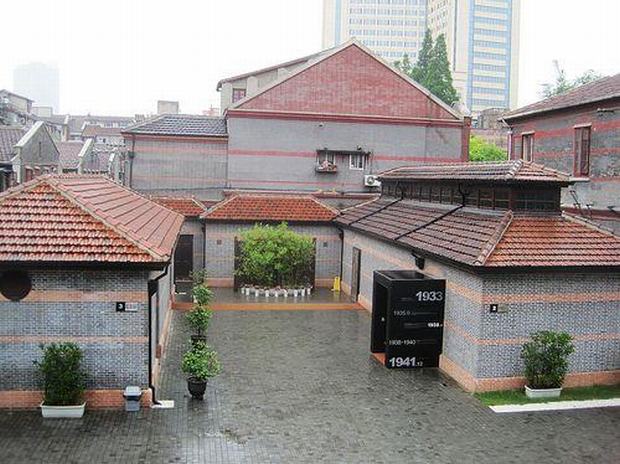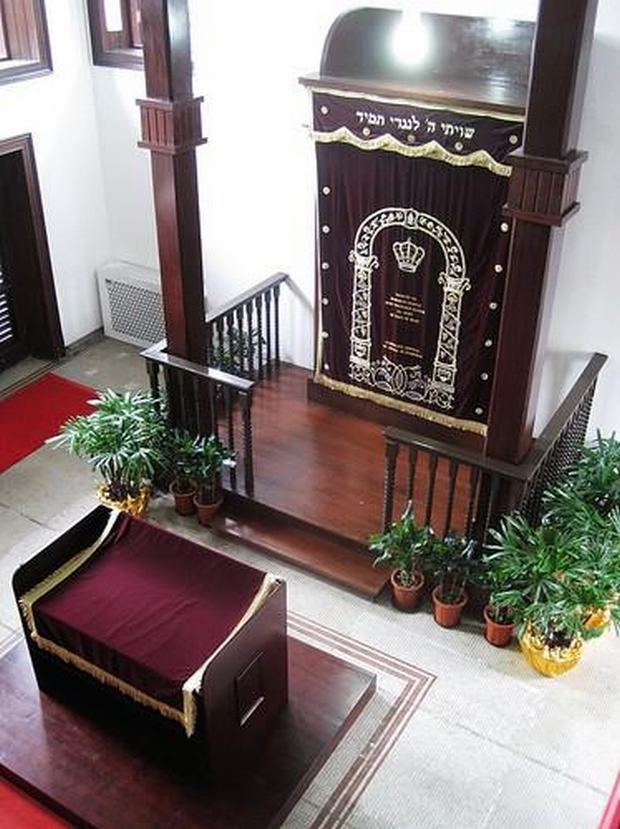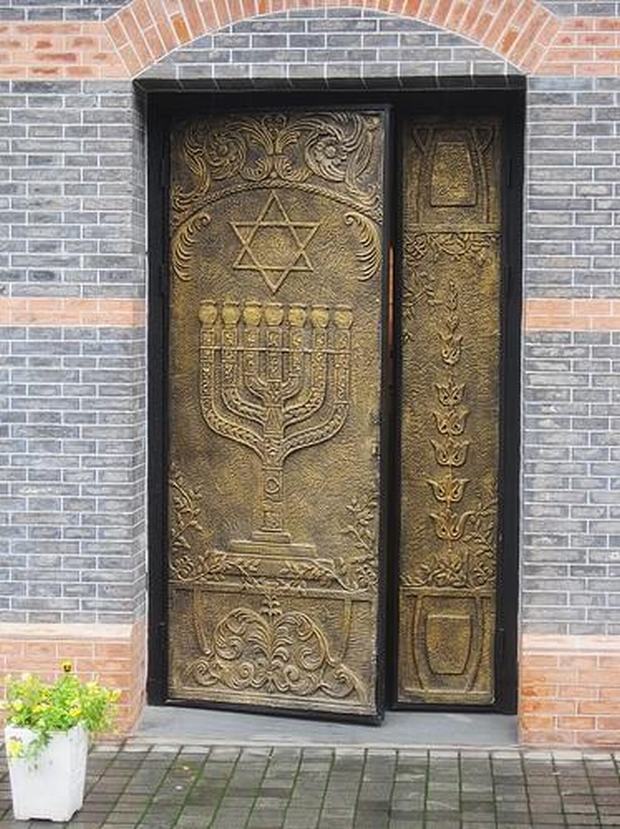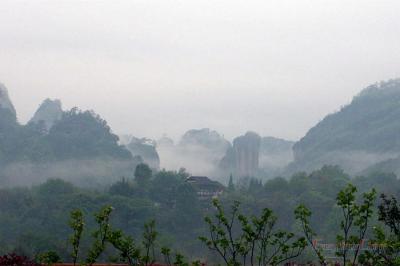Shanghai Jewish Refugees Museum
One of the most important Jewish Sites in Shanghai, The Shanghai Jewish Refugees Museum was first built as a religious hall called Ohel Moshe Synagogue in 1920s. During 1933 to 1941, it played the role of modern-day “Noah’s Ark” accepting around 30,000 Jewish refugees fleeing the Holocaust in Europe. Today, Shanghai Jewish Refugees Museum is a typical historic trace of Jewish refugee life inside China during the World War II.
Located in the Hongkou District, the Shanghai Jewish Refugees Museum is an important component of the “Tilanqiao Historic Area” and serves as a witness commemorating the phase of history when the Jewish refugees lived in Shanghai. In the “Designated Area for Stateless Refugees” in Tilanqiao area, about 20,000 Jewish refugees lived harmoniously with local citizens, overcoming numerous difficulties together. The place became a ghetto where both Jews and Chinese shared years of hardship."Tilanqiao Historic Area" is still relatively well preserved as a Jewish residential area at that time. It is the only historical site in China that can reflect the life of Jewish refugees during World War II, and a must-visit site for jews who travel in Shanghai.
Shanghai Jewish Refugees Museum Facts
- In Chinese: 上海犹太难民纪念馆
- Address: No.62 Changyang Road, Hongkou District, Shanghai
- Opening hours: 09:00 – 17:00 (last entry at 16:30, closed on Mondays)
- Recommended visiting time: 1hr
- Ticket price: RMB20 (RMB20 for senior citizens)
>> Check out China's Tourist Attractions Discount for Seniors
Architecture
The main building of the Shanghai Jewish Refugee Memorial Museum is a three-story green brick wall. Horizontal bands of red bricks are used as decorations, and the windows and doors are decorated with arches in traditional style. The zigzag entrance has some Jewish architectural features. Above the main door is the Jewish symbol “Star of David”.
What to See?
There are three parts in Shanghai Jewish Refugees Museum, including the former site of Ohel Moshe Synagogue and two exhibition halls. Here, the original features of the Jewish settlement are still well preserved.
The former site of the Moses Synagogue
Digging into the history of Shanghai Jewish Refugees Museum, the original Ohel Moshe Synagogue was founded in 1907 and moved to its current site in 1927. It was a synagogue for Orthodox Russian and German Jews. The synagogue was also once the headquarters of the Jewish Youth Organization. The Jewish refugees lived a free and peaceful life around the former Ohel Moshe Synagogue. Between the end of the World War II and 1960's, many left China and immigrated to all parts of the world one after another. Being an important part of Shanghai Jewish Heritage, the former Ohel Moshe Synagogue was acknowledged as an excellent historical building. Now, converted into the Shanghai Jewish Refugees Museum, the three-story house has been restored to its original state.
>> Recommended: 16-day China Jewish Heritage Tour
The first floor is the sanctuary where visitors can see the original mosaic floors and the ark. Old pictures of Jewish halls and houses built by Jewish tycoon David Sassoon hang on the walls. Next to the sanctuary, in the synagogue's former kitchen, is a showroom for Jewish art exhibits. The short film about the refugees living in Shanghai together with an oil painting and sculptures in the exhibition hall make that phase of history come alive. In addition, duplication of a refugee’s passport, the Shanghai Jewish Chronicle, and a large stone tablet engraved with Rabin’s inscription are also on display.
The second exhibition hall
It was completed at the end of 2007, displaying more than 140 pictures. The richly informative short films, together with sculptures, round sculptures, oil paintings and other works of art, vividly reproduce the history of the Jewish refugees in Shanghai. In addition, there are also replicas of refugee passports and Shanghai Jewish Morning Post, as well as large stone tablets engraved with Rabin's inscriptions, etc.
The third exhibition hall
It was completed in May 2008. exhibitions on a variety of new themes are often displayed here.
White Horse Cafe
The White Horse Café first opened in 1939, run by Mr. and Mrs. Rudolf Mossberg, who had fled to Shanghai from Vienna, Austria. It was popular with the uprooted Jewish refugees and was their daily meeting place. The café was originally located at the intersection of Changyang Road and Lintong Road, but was demolished in 2009 in connection with the widening of Changyang Road. 2015, as an important project to commemorate the “70th Anniversary of the Victory in the Anti-Fascist War”, the café was rebuilt at No. 67, Changyang Road, at a ratio of 1:1, with some of the original architectural elements and furniture preserved.
Huoshan Park
Located at No.118 Huoshan Road, it was built in 1917 and was originally called Stadeli Park. During World War II, it became a resting and gathering place for Jewish refugees living in Hongkou, and was popular with Jewish children. 1994, the “Jewish Reunion in Shanghai” was held, and a monument to the “Jewish Refugee Settlement during World War II” was set up in Huoshan Park.
The former site of American Jewish Joint Distribution Committee
The American Jewish Joint Distribution Committee (abbreviated as JDC) is a relief organization founded in New York, the United States in 1914. In 1938, a branch was established in Shanghai, with its office located at No. 119 to No. 121, Huoshan Road. JDC was one of the main relief organizations providing assistance to European Jewish refugees in Shanghai at that time. The aid funds were mostly used to build refugee dormitories, relief canteens and hospitals, etc.
Roy's Roof Garden (Broadway Theater)
In 1928, the Odeon Theater Company invested in the construction of the Broadway Theater. In 1939, Jewish refugees leased and remodeled the roof of the theater, turning it into Roy's Rooftop Garden, which was known as a gathering place for Jewish refugees at the time. During the holidays, many Jews dressed in costume and attended dances and banquets in the Roy Roof Garden. Jewish artists also often gave concerts here.
>> Explore Top 12 Museums in Shanghai
How Were the Exhibits Collected?
Although the memorial hall covers a small area, the exhibits are hard-won. At the beginning, there was not a single historical document, only a few panels telling the story of the Jews in Shanghai. There are few historical documents left to reflect the life of Jewish refugees in Shanghai, and most of the valuable historical documents have been collected and preserved by influential Jewish memorials around the world, such as those in Berlin, Jerusalem and Washington. Some Jewish refugees still have some historical records, but these are often of great significance to the refugees themselves and are unwilling to hand them over to others.
There are three main ways for the Shanghai Jewish Refugees Museum to collect historical materials. One is to look for clues from the audience through the opportunity of touring exhibitions abroad. Some former refugees who came with historical materials offered to donate their collections to the museum after the exhibition. Although some old people with precious historical materials are reluctant to donate them, they will leave their wills and entrust their children or friends to give the treasured memories of Shanghai to the memorial hall after their death. The museum got its first exhibit in 2010, a model bamboo toy rickshaw collected in Hamburg, Germany.
The second way to collect historical materials is to look for clues from foreign visitors. In hosting visitors associated with Jewish refugees in Shanghai, the museum's volunteers have the care to document their stories. If the former Jewish refugees come to visit, the volunteers will immediately arrange on-site interviews and ask them to tell their experience and memories of Shanghai. For the descendants of Jewish refugees, volunteers also asked them to talk as much as possible about what they had seen and heard. Guita, a former Jewish refugee, had lived in Shanghai for 6 years when she was very young. "There is no better shelter in the world than Shanghai," she said excitedly over the phone. “Safe havens are important for Jewish refugees. Only Shanghai was open to Jews. Shanghai is really an amazing place." And on the spot, she promised to donate her student ID card in Shanghai to the museum.
The third way is that embassies and consulates abroad, institutions abroad and Confucius institutes around the world contact the museum after getting clues. In 2015, with the recommendation of the foreign director of the Confucius institute in Sydney, Shanghai Jewish Refugees Museum rescued more than 40 historical materials from a family's garage.
The Shanghai Jewish Refugees Museum has changed dramatically from a decade ago. The museum has collected hundreds of historical documents from around the world, the largest of which is a collection of more than 2,000 books entrusted to Chinese friends by a Jewish headmaster when he left Shanghai.
>> Explore Top 10 Best Museums in China
How to Get to Shanghai Jewish Refugees Museum?
Metro Line 4 and 12 are both running to Tilanqiao area. You can take Metro Line 4 to Dalian Road Station, leaving from Exit 6; you can reach the museum after walking about 500 meter. Metro Line 12 runs to Tilanqiao Station; leave from Exit 2 and walk along Changyang Road for 100 meters, you can see Shanghai Jewish Refugees Museum.
Bus 22, 868 and 934 run to East Changzhi Rd Haimen Rd Stop; Bus 13 and Bus 319 drive to Haimen Rd East Changzhi Rd Stop; or you can take Bus 875 to Haimen Rd Changyang Rd Stop. They are all close to the museum.
>> Customize a Shanghai tour to visit Shanghai Jewish Refugees Museum
More Attractions in Shanghai




